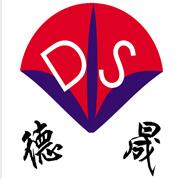- Enzyme(14)
- Carbomer(2)
- Blood collection tube additives(12)
- trinder's reagent(9)
- Biological buffer(21)
- Chemiluminescence reagent(9)
| Hubei xindesheng Material Technology Co., Ltd | |
|---|---|
| Country: | China |
| Tel: | +8618971041571 |
| E-mail: | zjing9632@gmail.com |
| QQ: | 2198447049 |
| Skype: | Chat Now! |
The difference between the buffer HEPES and PIPES
Release time: 2021-10-22
HEPES, 4-hydroxyethylpiperazine ethanesulfonic acid is a zwitterionic buffer, easily soluble in water. It is widely used in cell culture media, protein, IVD kits and other fields. Adding to cosmetics has the effects of exfoliating and assisting permeability. This ingredient can often be seen in emulsions, gels, and creams. Because hydroxyethylpiperazine ethane sulfonic acid can maintain a constant pH during the chemical reaction, it is often paired with glycolic acid and other ingredients to help extend And maintain the quality of skin care products.
PIPES 1,4-piperazine diethanesulfonic acid is a buffer solution that is soluble in NaOH aqueous solution and insoluble in water. It cannot form stable complexes with most metal ions. It is suitable for buffers in solution systems containing metal ions. PIPES It is widely used in the purification of tubulin by phosphocellulose chromatography and the purification of recombinant GTP binding proteins ARF1 and ARF2 by gel filtration. It is used as a buffer to crystallize transketolase from Escherichia coli and is not suitable for redox systems.
What is the difference between HEPES and PIPES
1. Solubility: HEPES has good water solubility, while PIPES is insoluble in water.
2. Buffer range: HEPES is neutral to alkaline, PIPES is acidic to neutral.
3. Structural difference: HEPES contains one sulfonic acid group and hydrogen group, while PIPES has two sulfonic acid groups.
In addition, PIPES and HEPES have certain restrictions in some system applications. Therefore, when we choose the above buffer, we need to consider the suitability of the experimental system and the difference in the properties of the two.
Desheng has been producing and developing biological buffers for many years and has a professional R&D team. The biological buffer products currently produced include a series of biological buffers such as TRIS, HEPES, PIPES, TAPS, MOPS, CAPS, BICINE, EPPS, PEP, etc. Available for customers to choose. The quality of the products currently produced by Desheng is guaranteed, and there is no worry about after-sales. If necessary, please feel free to contact us at any time and look forward to your call!

